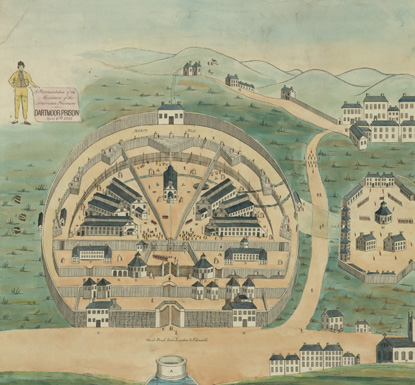If the War of 1812 was largely a series of military disasters for the United States, the Treaty of Ghent that ended it was a windfall and godsend. Signed in Belgium on Christmas Eve in 1814, copies arrived in Washington on February 14, 1815. The Senate ratified the pact two days later, and forgetting could begin.
But the status quo ante bellum (the state that existed before the war) was not really restored. US negotiators signed 14 treaties between July and October 1815 but returned no land.
Political Spin

Library of Congress
Though the treaty did not actually address the primary issues that propelled the country to war, by 1815 Americans were generally happy to accept a stalemate with the British. The political objectives of President James Madison and the Democratic-Republicans determined how the war would be characterized publicly in its immediate aftermath—as a glorious victory, a heroic defense of the United States.
General Andrew Jackson’s victory in the Battle of New Orleans on January 8, 1815, though tardy, proved timely. It was real enough and recent enough that it could help obscure the memory of the military debacles that began with General William Hull’s disgraceful defeat and surrender at Detroit in August of 1812. Similarly, American maritime triumphs and the war’s genuine naval heroes were immediately marketable. Troubling details like the ill-famed Dartmoor incident could contradict the popular party line, but the American public—as much as Madison—seemed relatively uninterested in less auspicious facts.
When the release of American prisoners held at Dartmoor in England was delayed in the spring of 1815, some detainees grew restless. On April 6, guards overreacted to their agitation and shot into a crowd, killing seven and wounding 32. American accounts quickly represented the tragedy as “the Dartmoor Massacre,” threatening the new peace and dampening the buoyant tone of the American postwar narrative. A joint American-British investigation judged the incident to be an unfortunate accident, and the British provided compensation. The Madison administration was able to calm tensions and derail a storyline that Americans sought to avoid—one that cast them as victims rather than heroes. Survivors would later publish their own potentially inflammatory accounts in the United States, but these, along with pension petitions that offered non-heroic personal tales of loss and pain, could not compete with the celebratory patriotic narrative that dominated the public sphere.
Selective Remembrance
If American public memory rejected victimhood in the wake of the Dartmoor Massacre, it seemed to embrace it conditionally and purposefully earlier, following the infamous River Raisin Massacre of January 1813. General James Winchester had moved his small army of Kentucky volunteers imprudently north from the Maumee Valley in Ohio toward Frenchtown, along the River Raisin south of British-held Detroit, to rescue its inhabitants. Momentarily successful, the Americans rashly advanced too close to the enemy and too far from any possible support. A few days later, Winchester’s men were overpowered by a superior force of British regulars, militia, and Indians; what began as a credible defense degenerated into panic, defeat, deaths, and surrender. On January 23, Indian allies of the British massacred some 30 to 60 wounded American prisoners left behind in Frenchtown. The incident shocked and embarrassed the British. It enflamed the Americans. The cry, “Remember the Raisin,” was seared into American public consciousness. Plundering, scalping, and atrocities besmirched the records of both sides in the conflict, but the horrific events at the River Raisin enabled an American propaganda war that charged the British with treachery, advanced the Democratic-Republicans’ war agenda, and diverted attention from the ineptitude of its military efforts. Celebration of these victims aided recruitment; more importantly, it renewed familiar charges of Native savagery and sparked new eruptions of Indian-hating, even though Native people served on both sides in the war.
If Americans ultimately failed in their effort to conquer Canada, the war significantly advanced their conquest of the West against Native peoples struggling to preserve their homelands. At the Battle of the Thames in 1813, US forces prevailed and killed Tecumseh, a Native leader critical to pan-tribal resistance. Along the country’s southwestern frontiers, General Andrew Jackson defeated the divided Creeks, which would effectively open up millions of acres for the westward expansion of the Cotton South. The Treaty of Ghent ending the war stipulated that the United States guarantee to western Indians the same status and territory as they possessed in 1811. But the status quo ante bellum (the state that existed before the war) was not really restored. US negotiators signed 14 treaties between July and October 1815 but returned no land. Forget? Though the British government showed some concern for their Native allies—allies who had contributed significantly to their defense of Canada—they ultimately abandoned them to their unpromising fate, as they faced new waves of expansion by the American republic. White Americans soon forgot how tenuous their “victory” in the West had been, and few beyond the Old Northwest continued to remember the Raisin.
Part of a series of articles titled Legacies: The War of 1812 in American Memory .
Last updated: April 2, 2015
